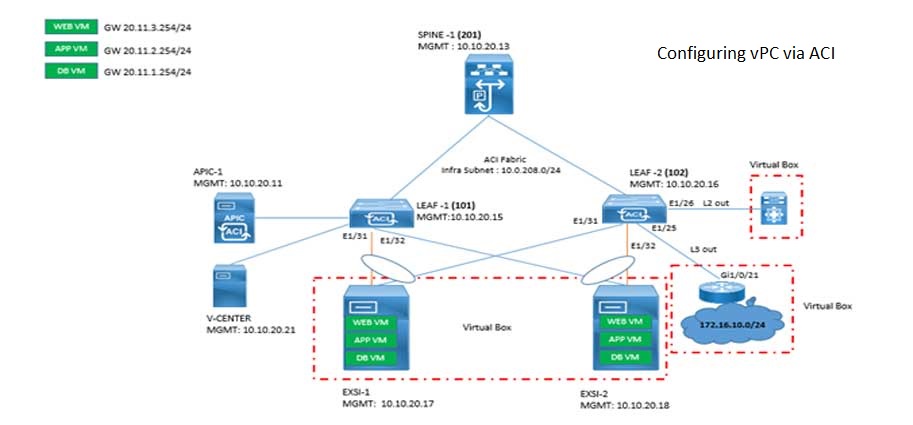
Greetings, fellow tech enthusiasts! Today's expedition leads us into the captivating world of virtualization. Picture a parallel universe where machines engage in a mesmerizing game of musical chairs with their identities. Fear not, for I shall guide you through the intricate wonders of this mystical technology.
Virtualization fundamentals encompass the core concepts and technologies enabling the creation of multiple virtual instances on a single physical system. Our focus lies on three main components: server virtualization, containers, and VRFs (Virtual Routing and Forwarding).
Server Virtualization:
Envision a mighty supercomputer, overflowing with power and potential. Now, imagine server virtualization, the art of slicing and dicing that colossal machine into multiple virtual servers. Each virtual server wholeheartedly believes it reigns supreme over the hardware kingdom, blissfully oblivious to its peers. Enter the grand orchestrator, the hypervisor!
Behold the hypervisor—a master magician deftly managing precious resource allocation. It ensures every virtual server feasts on its fair share of CPU, memory, and storage. In this virtual wonderland, it's like hosting a never-ending party, where each guest cherishes its private realm, oblivious to others. Astounding, isn't it?
But the magic doesn't cease there! The allure of server virtualization lies in its teleportation prowess. As mere software entities, virtual servers effortlessly leap from one physical machine to another. Picture relocating an entire party of virtual servers unnoticed, akin to nocturnal gnomes merrily hopping from garden to garden. This enchanting flexibility proves invaluable for disaster recovery, load balancing, and hardware upgrades sans any pesky downtime.
Server virtualization entails partitioning a physical server into multiple virtual machines (VMs), each running its OS and applications. A virtuoso hypervisor orchestrates the show, permitting multiple VMs to coexist independently on the same physical hardware. Each VM believes it's a standalone physical server, providing both isolation and resource management. In the diagram below, traditional architecture and virtual architecture is compared where in traditional architecture we have a hardware or physical server and on top of that operating system installed and there all the applications run. However, in the virtual architecture, on physical server hardware a hypervisor is installed like VMware ESXi or KVM and on the top of that virtual machines are created wherein different operating systems are installed which are independent of each other. Now inside each operating systems you can have your own applications running.

Key points of server virtualization:
Hypervisor: The hypervisor adeptly manages and allocates physical resources (CPU, memory, storage, network) among VMs. Two types exist: Type 1 (bare-metal) hypervisors, directly atop hardware, and Type 2 hypervisors, atop an existing OS.
Isolation: Every VM basks in isolation, shielding against issues that may plague others. Enhanced security bars unauthorized access between VMs.
Resource Management: Virtualization empowers efficient resource allocation, with multiple VMs dynamically sharing physical resources based on workload demands.
VM Snapshots: Admins capture VM snapshots at specific points, simplifying backups and restorations.
Popular server virtualization platforms include VMware vSphere/ESXi, Microsoft Hyper-V, and KVM (Kernel-based Virtual Machine).
Containers:
Ah, behold containers—the rising stars in the tech cosmos! Picture them as the hip and cool siblings of virtual servers. Light, swift, and oh-so-hip!
Within the magical realm of containers, we encounter Docker—an extraordinary tool resembling a shipping container for software. Empowering developers, Docker bundles applications with vital dependencies for smooth sailing. It's akin to crafting a tiny, isolated universe tailor-made for each application.
Now, the importance of isolation becomes evident. Containers prevent bothersome conflicts among applications that might otherwise drive developers batty. Visualize each container, blissfully ignorant of the external world, reveling as the sovereign ruler of its universe—akin to an introverted artist immersed in their masterpiece, oblivious to the realm beyond.
And the wondrous fact? Containers exhibit the agility of rockets, launching and halting in the blink of an eye. This remarkable dexterity renders them immensely scalable. Wait, there's more! Containers thrive on portability. Utilize them on your trusty old laptop during development and effortlessly deploy them on a colossal server in the cloud for production. A cosmic dance of seamlessness!
Containers are lightweight and portable, encapsulate software applications and their dependencies. Unlike VMs, containers share the host OS kernel, culminating in swifter deployment. Docker and Kubernetes, champions of containerization technologies, rule this domain. In the diagram below a comparison between virtual machines and containers are shown. Contains are further advancement of virtual machines where an operating system is installed on physical server and in that operating system container engine is install which keeps the binary and library files of various applications separately. Containers are mostly being used by programmers who require to work on various applications at the same time.

Key points of containers:
Container Engine: A container engine, such as Docker, manages containers. Abstracting the underlying OS, it ensures consistent execution across diverse environments.
Isolation: Containers offer a level of isolation between applications and the host system, though less stringent than VMs. Since they share the OS kernel, an issue within a container may affect others on the same host.
Portability: Containers boast unparalleled portability, facilitating seamless migration across different environments, encompassing development, testing, and production phases.
Microservices: Containers frequently serve as the chosen vessel for deploying microservices architecture. Applications split into small, independent services communicate via APIs.
Container Orchestration: Container orchestration tools like Kubernetes administer deployment, scaling, and monitoring of containerized applications.
VRFs (Virtual Routing and Forwarding):
But let us not overlook the captivating world of networks. Herein lies the marvel that is VRFs—Virtual Routing and Forwarding. These elusive entities resemble chameleons, seamlessly wearing multiple hats without rousing suspicion.
Visualize a single physical network—a stage hosting distinct groups of users or departments in blissful separation. Enter VRFs! They weave a tapestry of virtual routing instances, each group residing within its enigmatic parallel dimension, oblivious to the others' existence. Picture granting each department its exclusive secret language—Marketing converses in marketing jargon, Finance delves into the world of finance, and never do the two collide!
Yet, behold the revelation—the prowess of VRFs handling overlapping IP addresses with panache, like a seasoned acrobat executing daring feats. Clones, identical in identity yet thriving in separate realities, a spectacle to behold!
VRFs emerge as networking technology, spawning multiple virtual routing instances within a single network device, like routers or switches. Each VRF operates autonomously, boasting an exclusive routing table—coalescing multiple virtual networks within the confines of the same physical infrastructure.

Key points of VRFs:
Isolation: VRFs ensure network isolation, separating different VRFs logically, despite sharing the same networking equipment physically.
Routing Separation: Each VRF embraces its routing table, allowing identical IP subnets to coexist in distinct VRFs without triggering conflicts.
Multi-Tenancy: In service provider environments, VRFs take center stage, offering virtual private networks (VPNs) to multiple customers or tenants while preserving strict separation.
MPLS VPNs: VRFs represent a crucial component of Multiprotocol Label Switching (MPLS) VPNs, fostering secure and efficient data transmission between geographically scattered locations.
Conclusion:
And there you have it, my fellow adventurers—virtualization fundamentals unveiled! We've navigated through the mystical realms of server virtualization, containers, and VRFs. A domain for architects to stretch resources, craft isolated universes, and harmoniously coexist parallel realities.
So, the next time someone utters the word "virtualization," fear not the perplexity. Embrace the marvel of technology, and who knows? You may just transform into a virtualization wizard!
Remember, it's all about slicing, dicing, isolating—ushering in new dimensions. Boundless possibilities await, and the expedition has merely begun! Here's to happy virtualizing, with the virtual gods forever in your favor!
Don't Miss to Checkout our Next Articles
Preparing for the CCNA 200-301 Exam: Comprehensive Guide
Tips & Tricks for Success in CCNA Exam
Other Popular & Useful Articles
Essentials and Advantages of Network Automation
Configuring Cisco VoIP: Step-by-Step Tutorial
Comments (0)
Categories
Popular posts


Cisco Nexus Port Channel: Configuring ...
6 May 2024
Configure Rapid PVST on Cisco Nexus
26 Apr 2024
Palo Alto Exam Cost: PCNSA, PCNSE & More
27 Apr 2024
Cisco ACI VPC Configuration Task Steps
28 Apr 2024Recent posts

CCNA Exam Fees and Expenses Breakdown
16 May 2024
CCNA vs CCNP Certification: Differences
16 May 2024
What is CCNA: Exploring Its Significance
16 May 2024
Step by Step cisco WLC configuration
15 May 2024



